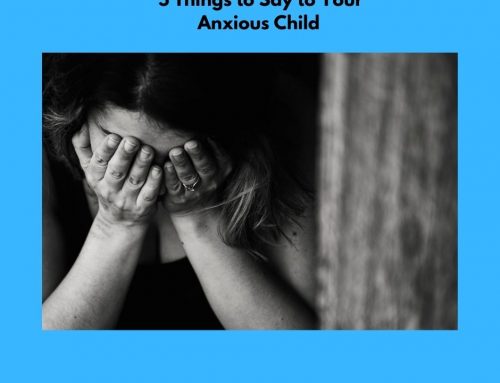Back to school. What was once a time that I looked forward to, is now a time filled with uncertainty, nervousness and a little bit of dread. I have three kids- 2 in high school and one in grade 8. Right or wrong and maybe a bit naive, I don’t feel overly anxious about my kids becoming seriously ill – they are all under 18; however, I do worry about what they may bring home. I worry about me, my husband and our parents.
My kids on the other hand, seem to be more curious than anxious about what this year will feel like. Will the standards of learning be the same or will they be trumped by the restrictions of worrying about COVID-19? Will they be able to concentrate while wearing masks for a prolonged period of time? Will they truly be protected? What will happen if someone feels sick or gets a cold? How does that affect the class? Will there be another school lockdown? So many questions, not a lot of answers.
Anxious feelings are expected and normal as children head back to school and this year is no different. Aside from new worries surrounding COVID-19, children are still worrying about more typical things such as:
- Who will be my new teacher?
- Will any of my close friends be in my class?
- Who will I eat lunch with?
- What if I don’t do well this year?
- Do I look ok?
Here are 5 steps to dealing with your child’s back-to-school worries:

- Sleep and Routine: Many of our kids have been out of a regular routine since March. Later bedtimes, sleeping in later… It’s important to go back to the basics of routine and structure. Make sure your kids are getting enough sleep, eating healthy, regular meals and are getting daily exercise. Keeping routines and structure are more important than ever during uncertain times. It helps provide children with a sense of security and predictability; something that many are missing right now with what’s going on in the world around them. When your child’s mind and body are well fed and rested, managing worries and anxiety around school becomes easier.
- Listen to Their Worries: Encourage your children to talk about how they are feeling and listen and validate any worries they may have. Give your children a chance to express themselves and remember, sometimes they are just looking to be heard and listened to. Don’t always feel like you need to have the answers. Now more than ever, we don’t know what school is going to look like or how things are going to unfold. Sometimes simply asking “how can I help?” or saying “I’m here to listen” is all they need to feel better.
- Focus on the Positive: Help your child focus on the positive. Have them write down three things that they are looking forward to about returning to school. These three things can include anything and most kids can think of at least some things that are positive; even if that includes the first PD day! Make it a fun activity and don’t forget to laugh. It’s easy to focus on the negative and often takes a little more effort to think about the good, but it’s there; you just need to look.
- Make a Plan: Even though you can’t solve all of your child’s problems or have all of the answers, you can help them come up with a plan that will help them cope with their worrisome feelings and anxiety. If your child is experiencing physical symptoms, ask questions such as “when you feel like that, what are some things you can do to cope?” If your child tends to ask “what if…,” counter it with “What if that happens? What will you do?” Having a plan gives your child the feeling of having some control over an unknown situation.
- Check in with Yourself: The start of the school year (this year especially) can be anxiety inducing for parents as well. Children take cues from their parents, so the more relaxed and calm you appear, the more your children will feel that they can manage going back to school. Be supportive and confident when saying goodbye. Take care of yourself.









